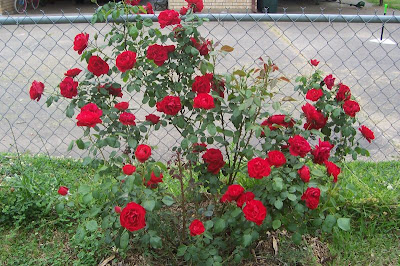Tubing on the river is a common summer activity around this part of the South in the hot part of summer. Around this same time, the tuberoses start blooming with their sweet-smelling spikes of bloom.
The blooms are set on long spikes of buds that open starting from the bottom buds. The fragrance is very gardenia-like and wafting. A stand of these can make a whole section of yard fragrant. The blooms can crisp quickly in the blazing sun, so I tend to pick off the crisped blooms each day and keep the fresh ones on the spikes so as to keep the blooms tidy. Cut off a whole spike to put in a vase for natural air freshener in your house.
I have way more bloom spikes this year, but they aren't as big and lush as last year. I think this is because my little bed of tuberoses has become crowded and needs to be divided. I can leave them in the ground year-round here and they will keep coming back. I suppose they need protection in winter in zones colder than zone 8. The variety I have is called "The Pearl." Mine keep sending blooms up until frost, as you can see from the date in the above picture which was taken last November. They like a sunny, dry spot. I suggest they would make a nice additiion to a bulb bed where you might want some blooms later in the year after other plants have finished.




+08-12-10.jpg)

+04-26-10.jpg)










+08-05-10.jpg)
+08-05-10.jpg)
+08-05-10.jpg)

+08-03-10.jpg)
+08-03-10.jpg)




+08-03-10.jpg)
+08-03-10.jpg)


